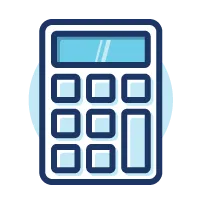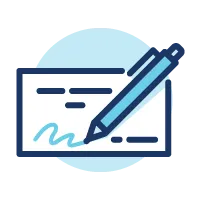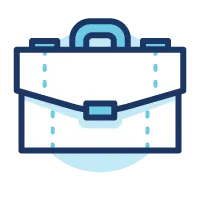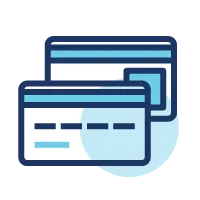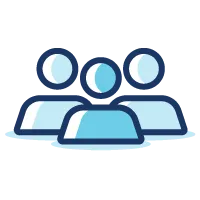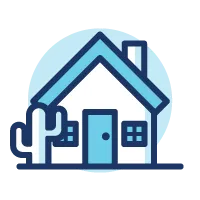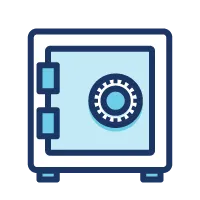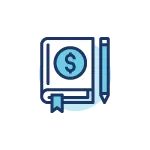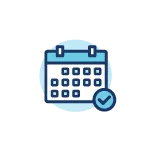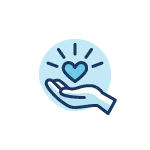What We'll Cover
- The differences between banks and credit unions
- Checking account benefits and features
- Savings account benefits and features
- How to use your checking and savings accounts
- Tips for budgeting your money
Whether you just landed your first job or you’re looking to more intentionally manage your money, it’s important to understand your options when it comes to banking. Getting the most out of the financial tools at your fingertips can help you crush your financial goals and develop healthy lifelong money habits. Use this guide to learn the basics of banking.
Where to Manage Your Money: Bank or Credit Union?
The first decision you need to make with your personal finances is where you’ll house your money. The financial institution you choose, whether a bank or a credit union, will become part of your everyday life. From visiting a branch to using mobile banking, choosing the right financial institution matters.
The Differences Between Banks and Credit Unions
- Banks are for profit and credit unions are not-for-profit. Banks are either privately owned or publicly traded and need to generate profits for their owners or shareholders. Credit unions are owned by the members of the credit union and can pass their savings back to their members.
- Credit unions typically have lower fees than banks. Because credit unions can focus on their members instead of shareholders, they are able to offer better higher deposit rates and lower rates on loans. Banks may charge monthly maintenance fees for checking, whereas you can get a free checking account with a credit union.
- Credit unions focus on member and community service. If service is important to you, you’ll likely get a more personalized experience at a local credit union. Credit unions are also engaged in giving back to their local community.
The Similarities Between Banks and Credit Unions
- Your money is insured. Depositors are insured up to $250,000 by the Federal Deposit Insurance Corporation (FDIC) for banks and the National Credit Union Administration (NCUA) for credit unions.
- You can bank safely at your fingertips. Banks and credit unions both offer up-to-date technology when it comes to online and mobile banking. You can deposit a check on your mobile device, set travel notices, or aggregate all accounts into your online banking dashboard.
- Access ATMs across the US. Banks and credit unions offer fee-free ATMS in several locations across the country so you can access cash at your convenience.
What features are important to you when it comes to banking? Think about what you value most in your banking experience to decide whether a bank or credit union is the best place to manage your money.
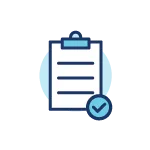
Checking Account Basics
Once you’ve decided where to manage your money, the next step is to open a checking account. A checking account is where you’ll keep your spending money for everyday purchases and bill payments. This type of bank account allows you to deposit, transfer and withdraw funds easily and quickly.
Checking accounts have low dividend rates, so this is not somewhere you’d want to store large amounts of money. A checking account is a better place for storing money to use on short-term expenses.
Keep around one- or two-months’ worth of living expenses in your checking account.
Fees and Charges with Checking Accounts
Depending on the financial institution, your checking account may come with a monthly maintenance fee. Most credit unions, including OneAZ, offer a basic free checking account that is great for your everyday spending.
You may also get charged an overdraft fee if you have insufficient funds to cover a transaction. In most cases, you can link a savings account for overdraft protection. Review the fee schedule for your checking account to understand what fees you may be charged and how to avoid them. Manage and monitor your account regularly to ensure you have enough money to cover your purchases.
How to Open a Checking Account
You can open a checking account online, over the phone, or in person at a branch. You will need your Social Security number and a form of identification, like a driver’s license or passport. You will also need to make an initial minimum deposit.
How to Use Your Checking Account
- Set up direct deposit. Direct deposits allow your paychecks to be automatically deposited into your checking account, meaning your money is easily accessible, without you lifting a finger.
- Set up online and mobile banking. This allows you to monitor and manage your account electronically. You can review your spending and account activity and transfer funds from one account to another.
- Set up online bill pay. You can set up recurring payments for your rent, mortgage, car payment and even your subscriptions for streaming services.
- Use your debit card or digital wallet to make purchases. Your checking account will come with a debit card that you can use for all your in-person or digital payments. You can also order checks, if needed.
- Send money to someone else with Zelle®. Connect your checking account to Zelle®. All you need is a phone number or email address to send money quickly and without any cost!
Savings Account Basics
Opening a savings account will help you put money away toward bigger financial goals. Unlike checking accounts, savings accounts typically offer higher interest rates so you can grow your savings over time.
You can deposit money into your savings similarly as you would to your checking account, whether by direct depositing your paycheck, using an ATM, or visiting a branch. However, you won’t have a debit card linked with this account to make payments. A savings account is better used for cash you’ll need later, like for an emergency, an upcoming vacation, or a down payment on a house.
Fees and Charges with Savings Accounts
Savings accounts may come with a monthly maintenance fee, ranging from $1 to $8 depending on the bank. Sometimes you can get these fees waived, either by signing up for eStatements or by maintaining a certain balance in your account.
Financial institutions typically limit the number of transfers from a savings account, and there can be a fee if you go over that number. This is to help you keep your savings in check and avoid excessive withdrawals.
How to Open a Savings Account
You can open a savings account online, over the phone, or in person at a branch. You will need your Social Security number and a form of identification, like a driver’s license or passport. You will also need to make an initial minimum deposit.
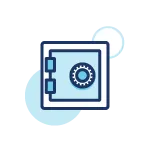
Types of Savings Accounts
- Traditional Savings / “Share” Savings: You earn interest on a traditional savings account (commonly called Share Savings accounts with credit unions) only if you keep at least the minimum required amount in the account. If your balance is lower, some banks don’t pay interest and others may charge a fee for holding your money.
- High-Yield Savings: A high-yield savings account offers a better interest rate on deposits than a traditional savings account. This option is a low-risk way to reach short-term savings goals faster. Consider a high-yield savings account for establishing your emergency fund or saving for a down payment or vacation.
- Money Market Accounts: A money market account (MMA) is a savings account that typically pays higher interest rates than regular savings accounts. MMAs usually offer tiered rates, meaning you can earn an even higher rate on large balances or on part of your balance over a certain level.
- Share Certificates: A share certificate – similar to a certificate of deposit (CD) at a traditional bank – are high-end savings accounts. These will generally pay higher interest rates but come with different regulations. You’ll have a much higher minimum deposit requirement, and you won’t have the quick access to your funds that you would have with a regular savings or money market account.
How to Use a Savings Account
Savings accounts can be used in a number of ways, and how much to keep in your savings account depends on your goals and what you want to use your savings for. Here are some ways to optimize your savings:
- Start with an emergency fund. Prioritize saving up for three to six months’ worth of your living expenses to be able to cover emergency situations.
- Save for something specific. Once you have that emergency fund established, add more fun savings goals. Maybe you want to take a vacation, buy an engagement ring, or save for a down payment on a home.
- Save for retirement. If you don’t have a retirement account yet or want to supplement retirement savings, a savings account can be a good place to save that money as well.
Automate your savings either by direct depositing a portion of your paycheck into your savings account or by setting up an automatic transfer from your checking account each month, so you don’t have to think about it.
Budgeting Basics
Once you have your checking and savings accounts established and you’re depositing paychecks, it’s time to get strategic in managing your money.
A practical, workable budget is one of the most crucial tools in your financial wellness arsenal. Your budget is your blueprint for keeping cash flow positive and sticking to your saving goals. Complete the following steps – in order – to create a budget and conquer your finances.
- Figure out your monthly income. Add up your after-tax monthly income from your job and any freelance, contract or side work you do. This is your starting point.
- List every monthly expense. Subtract your monthly bills from the monthly income you determined in step 1.
- Pay yourself. Set aside some money in your savings each paycheck or each month to start building your emergency fund or to contribute toward your savings goals.
- Pay off your debt. The sooner you pay down your debt, like student loans or credit cards, the sooner that money is freed up for other uses. Plan to pay more than the minimum monthly payment on these bills.
- Make room for the fun stuff. Factor some entertainment money into your budget for eating out, going to concerts or shopping.
Use this Free Budgeting Worksheet to get started on your budget.
Key Takeaways
- Your money is insured up to $250,000 at both banks and credit unions.
- Credit unions are not-for-profit and member-focused, while banks are for profits and generate an income for their investors.
- Open a checking account to use for everyday expenses and bill pay.
- Open a savings account for emergency funds, personal savings goals, or retirement.
- Create a budget to keep cash flow positive and stick to your savings goals.
Getting your first paychecks and setting up your bank accounts are great first steps to financial independence. Use these money management fundamentals to set yourself up for success.
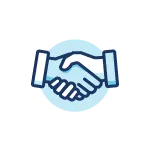
APR = Annual Percentage Rate

